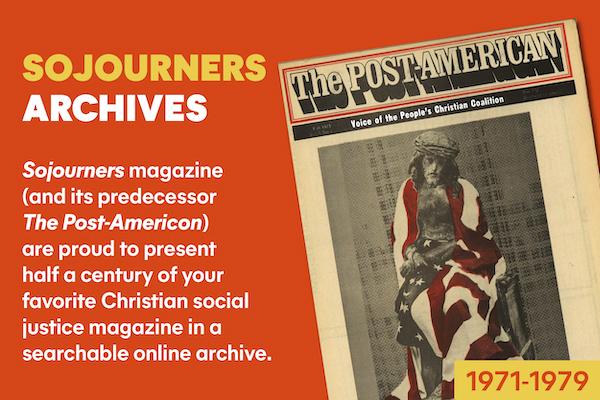Bread for the World, Arthur Simon, Eerdmans and Paulist Press, 1975, 179 pages, $1.50.
What Do You Say to a Hungry World? W. Stanley Mooneyham, Word Books, 1975, 272 pages, $6.95.
New Hope for the Hungry? Larry Minear, Friendship Press, 1975, 140 pages, $1.95.
This review focuses on three recent books providing valuable background for individuals, study groups and congregations struggling with world hunger. All three approach the problem from a Christian viewpoint; all three represent agencies that are channels for Christian response. Arthur Simon heads the organization with the same name as his book, Bread for the World. Larry Minear, the Consultant on World Hunger for Church World Service and Lutheran World Relief, asks, New Hope for the Hungry? The president of World Vision, Stanley Mooneyham, also poses a question in his title, What Do You Say to a Hungry World? This immediate involvement in world hunger gives authenticity and urgency to the three writers’ messages, but their own organizations’ efforts are not predominant in their books.
All three books serve as a general introduction to world hunger and related problems, but each has a specific purpose. Bread for the World emphasizes the neglected role of public policy, rightly recognizing that feeding the hungry depends more on government policies than the private relief efforts and that ordinary citizens who care about hungry people can influence those policies. New Hope for the Hungry? emphasizes constructive action by both governments and voluntary agencies, surveying the Canadian as well as the U.S. scene. Stanley Mooneyham has several objectives in raising the question, What Do You Say to a Hungry World? First, to demythologize the hunger issue (among the myths: it is impossible to produce enough food to feed the growing population, and the United States is a generous country). Second, to emotionalize the hunger issue. Some may feel there is already too much appeal to emotion in the pictures of starving children and similar visual and verbal stimuli, but Mooneyham believes that feeling can lead to identification and then creative compassion can begin. The third objective is to alert us to the growing economic gap in the world separating “us” from the “rest of the world,” and the implications of this for modifying our standard of living.
Each book does an admirable job of incorporating the many facets of the hunger problem into an integrated, comprehensible summary. New Hope for the Hungry? is the briefest, an easy-to-read survey which will leave many gaps for the more serious reader. A unique feature of this book is a revealing chart on pages 74-75, “Plowshare and Swords,” comparing the costs of implementing the recommendations of the Rome Food Conference with military expenditures. (Example: The $4 billion annual share by developed countries for a proposed ten year food production program represents only two percent of what those same countries spent for armaments last year.)
Bread for the World also relates military expenditures to the hunger problem in the chapter entitled, “Let Them Eat Missiles.” Other chapters describe the connections between food shortages and international trade, investments abroad, foreign aid and the environment movement.
Stanley Mooneyham’s book was a pleasant and stimulating surprise. I approached the book with some reservations about the organization the author represents; especially the uncritical cooperation with the U.S. government sometimes expressed by its representatives and programs. The author has done an excellent job of bringing together the essential facts and has added the perspective of his personal experience with victims of The hunger crisis, plus, I imagine, considerable re-thinking over the years as he has encountered human need around the world. Perhaps the most remarkable chapter, considering the conservative back ground of the author, is entitled, “The System.” The focus is the political and economic structures that create hunger amidst plenty, often unseen or ignored by most North Americans:
At the heart of the problems of poverty and hunger, injustice and inequity, are human systems which ignore, mistreat and exploit man made in the image of God. If humanity is to be served, if the hungry are to be fed, if the poor are to share in God’s bestowed abundance, some of the systems will require drastic adjustments while others will have to be scrapped altogether. The challenge is to change the system fundamentally.
How “the system takes from the poor and gives to the rich” through trade and aid arrangements is described specifically, with the aid of a chart. Senator Hatfield is quoted approvingly when he calls for “...a redistribution of power, and the wealth that brings power; an end to pre-emption of resources by the rich.” Revolutionary words, and one wonders how many of us would be prepared to accept their implications.
All three books agree on the basic dimensions of the hunger problem and the concerned Christian approach to a solution:
1. The problem is not going to be solved quickly; its causes are complex and will require long term commitment to be remedied.
2. Poverty and the gross economic injustice between the rich and the poor nations is an essential part of the problem. The need is for integrated development and changes in international trade patterns to halt the growing rich-poor gap.
3. Population must be controlled, but western misconceptions about the population problem hinder rather than help. Mooneyham and Simon have especially good discussions of Third World attitudes and the necessity of development as the long term solution to population growth.
4. The world can be fed. During the past decade the rate of increases in food production have been greater than the rate of increase in population. But the affluent have eaten more so that the poor have less. The problem is not technology, but priorities, intentions, and distribution.
5. Hunger and malnutrition is a problem in North America also.
6. Christians must reject “lifeboat ethics” or “triage” (since everyone can’t have enough, some must be allowed to die) on both rational and spiritual grounds.
7. Given the limits to economic growth and the moral dimensions of the problem, North American Christians must modify their standard of living. A leaner life style can also have many personal positive benefits.
8. Since the U.S.A. is the largest food producer, its policies make a vast difference to hungry people world-wide. Concerned Christians will recognize that one way to help feed the hungry and give them the tools to feed themselves is to influence the policies of their government.
When this article appeared, Edgar Metzler taught political science at Goshen College the year before and was a consultant to Church World Services and CROP, a hunger action group.

Got something to say about what you're reading? We value your feedback!
